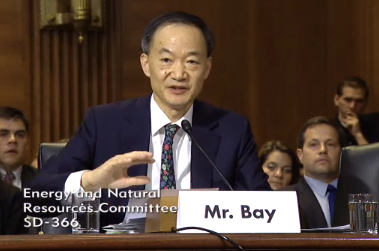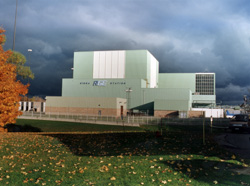FirstEnergy, Duke Energy, NRG Energy, Dynegy and AES all announced second-quarter earnings last week with FirstEnergy capturing headlines for its decision to exit most retail sales and AES saying it won’t sell Dayton Power and Light after all.
FirstEnergy Announces Retail Exit as Earnings Rebound
FE executives said that price volatility due to extreme weather and a “fundamental” change in retail markets has made the company decide to exit retail.
“We intend to exit the medium commercial and industrial, or MCI, and mass-market retail channels as existing contracts expire, but we will continue to serve strategic large industrial and commercial customers as well as our governmental aggregation in [provider of last resort] channels as appropriate,” FirstEnergy CEO Anthony Alexander said last week.
Volatility, eroding price stability and the need to swallow costs on fixed-rate offers translated into too much risk, Chief Financial Officer James Pearson said. “We were already taking steps to be more selective in our sales to the large and medium-sized commercial and industrial customers during the second quarter,” Pearson said.
The company reported earnings of 16 cents per share in the second quarter on earnings of $64 million and revenue of nearly $3.5 billion, compared to a loss of $164 million, or 39 cents per share, with revenue of more than $3.5 billion for the same period the year before.
Pearson said operating earnings were driven by a lower commodity margin, higher investment income and lower operating and maintenance costs.
Meanwhile, the four Pennsylvania subsidiaries of FE last week filed rate-increase requests to help pay for infrastructure enhancements.
Under the proposals, residential customers who use 1,000 kWh a month would see their bills increase by 11.8% for Penn Power, 14.7% for West Penn Power, 16.3% for Penelec and 17.8% for Met-Ed. A company spokesman said the new rates would allow the company to use technology to reduce the number of outages and the number of customers affected when outages occur.
The utilities want the state Public Utility Commission to approve the rates effective Oct. 3.
FE’s Ohio utilities filed a request to sign a 15-year purchase-power agreement with two unregulated FirstEnergy Solutions generators. (See related story, FE Wants Regulated Companies to Subsidize Generation)
AES: We’ll Keep DPL After All

The offers received “were not attractive relative to the long-term value to AES,” Chief Financial Officer Tom O’Flynn said during a conference call last week. “We therefore decided not to sell.”
Dayton Power and Light owns 2,897 MW of capacity, most of it coal-fired. DPL subsidiary DPL Energy owns 556 MW of peaking capacity in Ohio and Indiana. AES bought DPL in November 2011 for $3.5 billion, saying it wanted to increase its presence in the Midwest, where it already owned Indianapolis Power & Light.
At its first-quarter earnings call in March, however, O’Flynn told analysts AES would “explore all potential options to optimize” DPL, including a sale.
An improving wholesale energy market is one of the things that convinced AES to hang on to DPL, for the time being.
“The market is still higher than what we were projecting at the start of the year,” O’Flynn said. “Second, we saw an improvement in PJM [capacity] prices, which doubled, albeit from low level at the last auction, and outstanding proposals to provide additional improvement.”
He also cited a plan to improve generation plant performance and its multiyear commercial hedging strategy.
AES reported second-quarter earnings of 28 cents a share on revenue of $340 million, compared to 35 cents per share on revenue of $289 million for the same period last year.
Duke Earnings up 80%

The company reported earnings per share of 86 cents on $609 million in profit and revenue of $5.17 billion, compared to 48 cents/$339 million/$4.83 billion for the same period last year. The company also credited lower taxes and lower operational costs.
In a conference call, Duke CEO Lynn Good highlighted the company’s five-year growth plan through 2018, in which it will spend $18 billion to $20 billion on investments. These include $1.9 billion in three large natural gas-fired generation plants in Florida, and $600 million for a 750-MW plant in South Carolina.
This is on top of the company’s recent announcement that it was buying out North Carolina Eastern Municipal Power Agency’s ownership of 700 MW at Duke Energy Progress plants for $1.2 billion.
Good spent a significant amount of time on the call addressing the company’s Dan River coal ash spill and cleanup. Good said cleanup expenses were about $20 million through June and that she did not expect total costs to be material.
“We are cooperating with and defending the company in ongoing investigations resulting from the Dan River accident,” she said. Good noted that there have been legislative moves to require Duke to clean up some, or all, of the company’s remaining coal ash ponds. North Carolina’s legislature adjourned without approving a bill, and Good would not say what the total cost could be. But she said that depending on legislative and regulatory action, some or all of Duke’s costs could be covered.
“We believe the recoverability of coal ash based in closure cost will be determined by the Carolina’s Commission.”
NRG Posts Loss

CEO David W. Crane said the past two quarters prove NRG’s move to diversify away from strictly wholesale generation was a good one.
“Never before in my 11 years at NRG do I recall a first half of the year where we were so whipsawed by the weather,” he said. “A severely cold winter followed by a summer, which, to date, through the second quarter and so far into the third quarter, has been completely devoid of extreme weather in any of our core markets.
“Fortunately, to some degree, our diversification away from being exclusively a wholesale generator, first, into retail and then into clean energy, has increased the resilience of our earnings in the face of mild weather and tepid wholesale electricity demand.”
Perhaps the biggest news out of NRG is its decision to reorganize its business units. The three business units will be NRG Business, holding the wholesale generation business; NRG Home, which includes retail operations such as residential solar; and NRG Renew, its large-scale solar, wind and other renewables business.
Crane acknowledged on the conference call that yet another reorganization may be confusing for some investors but said it makes sense nonetheless.
“The way we’re organized going forward allows senior executives of the team to sort of focus in their area and win in their area because each area is pretty distinct,” he said. “I mean they’re mutually reinforcing, but each has different competitors.”
Dynegy Revenue up, Earnings Down

Dynegy has narrowed its losses since coming out of bankruptcy in 2012. Its second-quarter operating loss in its coal-fired generation business was $5 million, compared to a $49 million loss for the same period in 2013. Its gas segment shows a similar story, with a second-quarter loss of $2 million, compared to a loss of $36 million for the same period last year.
Dynegy President and CEO Robert Flexon is taking a long-term view.
“The underlying fundamentals continue to indicate improving capacity prices and higher energy prices and volatility,” he said. “These improvements are driven by a market expectation of reduced supply as a result of plant retirements, the majority of which will occur in the 2015-2016 timeframe.”






















